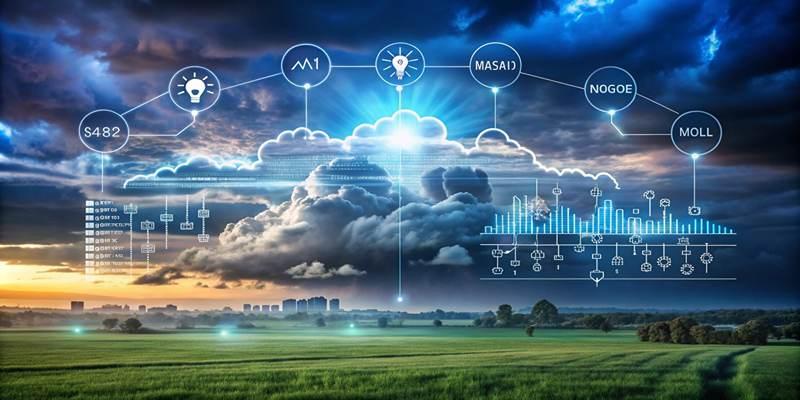Climate change, driven by human activities like deforestation and the burning of fossil fuels, has resulted in extreme weather events, rising global temperatures, and shifting ecosystems. The impacts are already being felt globally, and urgent action is needed to curb the damage. Artificial intelligence (AI) is emerging as a powerful tool to address this crisis, not only by predicting climate change but also by helping reduce its effects on our environment.
This post will dive into how AI is revolutionizing the way you understand, predict, and mitigate climate change's environmental impact, offering solutions that range from better weather forecasting to smarter energy use.
The Role of AI in Climate Change Prediction
Artificial Intelligence has the potential to drastically improve our ability to predict climate changes with greater accuracy. Here’s how:
Climate Modeling and Simulation

AI systems are now being used to improve climate models. Most climate models are based on a lot of complicated calculations and assumptions about how the Earth's oceans, atmosphere, and land areas work. If AI looks at huge amounts of past climate data and finds patterns that people might miss, it can help make these models better. It allows us to:
- Predict temperature changes
- Estimate future weather events
- Understand the impact of human activities on climate
AI can make better predictions and shed more light on future weather patterns by looking at weather data. It helps governments and groups get ready for possible climate-related risks.
Real-time Climate Monitoring
AI also helps in the real-time monitoring of environmental changes. IoT monitors and satellites gather huge amounts of information about carbon emissions, the weather, and the quality of the air. AI quickly processes this data, which lets scientists find strange trends, such as sudden rises in temperature or cutting down trees. It helps to:
- Monitor deforestation and land-use changes
- Track air pollution levels
- Assess biodiversity loss
With real-time insights, AI can alert authorities to impending environmental disasters, such as forest fires, hurricanes, or droughts, allowing for timely intervention.
Predicting Natural Disasters
AI-powered prediction systems are helping to forecast natural disasters that are linked to climate change. Machine learning models can analyze historical data and detect warning signs of extreme weather events like:
- Hurricanes
- Floods
- Wildfires
- Droughts
These predictions can give governments and emergency services enough time to prepare and evacuate people from affected areas, reducing loss of life and property damage.
AI's Role in Mitigating Climate Change Effects

AI isn't just about predicting climate change—it’s also playing a pivotal role in mitigating its effects. Through various applications, AI helps optimize resources, reduce waste, and promote sustainability across industries.
Optimizing Energy Consumption with AI
The energy sector plays a major role in both contributing to and mitigating climate change. AI is being used to improve energy efficiency, reducing the reliance on fossil fuels and promoting the use of renewable energy sources.
- Smart Grids: AI-enabled smart grids analyze energy demand in real time and adjust supply accordingly. It helps prevent overproduction and reduces energy waste. By optimizing energy distribution, smart grids can make renewable energy sources like solar and wind more reliable and efficient.
- Building Energy Efficiency: AI can optimize energy usage in buildings by controlling heating, ventilation, and air conditioning (HVAC) systems. By analyzing factors like occupancy, outdoor weather, and energy consumption patterns, AI can reduce energy waste while ensuring comfort.
- Renewable Energy Integration: AI helps in managing renewable energy sources by predicting their availability based on weather forecasts. For example, AI can predict when solar or wind energy production will peak, allowing for better integration into the grid and reducing reliance on non-renewable power sources.
AI in Carbon Capture and Emission Control
Carbon emissions are a major driver of climate change, and reducing these emissions is critical to mitigating environmental harm. AI is being utilized to enhance the efficiency of carbon capture and storage (CCS) technologies, which remove CO2 from the atmosphere.
- Carbon Sequestration Optimization: AI models can help optimize the placement of carbon capture facilities by analyzing geographical data to find the best locations for CO2 storage. It improves the efficiency of carbon capture processes and ensures that stored carbon stays securely underground.
- Emission Reduction in Industries: AI systems are also being used in industries such as manufacturing and transportation to monitor and reduce emissions. By analyzing production data, AI can identify inefficiencies and suggest ways to cut down on energy consumption and carbon output.
The Challenges of Implementing AI in Climate Action
Despite the numerous benefits of AI, some challenges need to be addressed for it to be fully effective in combating climate change.
- Data Quality and Availability: AI systems rely on large, high-quality datasets. In many regions, reliable data on climate change and environmental factors is still lacking, making it difficult to create accurate models and predictions.
- Energy Consumption of AI: Although AI can help reduce energy consumption in many industries, the process of training AI models can be resource-intensive. Ensuring that AI technologies themselves are energy-efficient is crucial for their long-term sustainability.
- Access to Technology: Many developing countries lack the infrastructure and financial resources to implement AI-driven climate solutions. Bridging the technological divide is essential to ensuring that AI benefits are accessible to all nations.
Conclusion
AI has shown incredible potential in both predicting climate change and providing solutions to mitigate its impact. From optimizing energy consumption to advancing sustainable agriculture and improving waste management, AI is helping tackle the climate crisis in innovative ways. However, realizing AI's full potential requires overcoming challenges such as data quality, energy consumption, and access to technology. With continued investment in AI research and development, you can expect more breakthroughs that will pave the way for a greener, more sustainable future.
